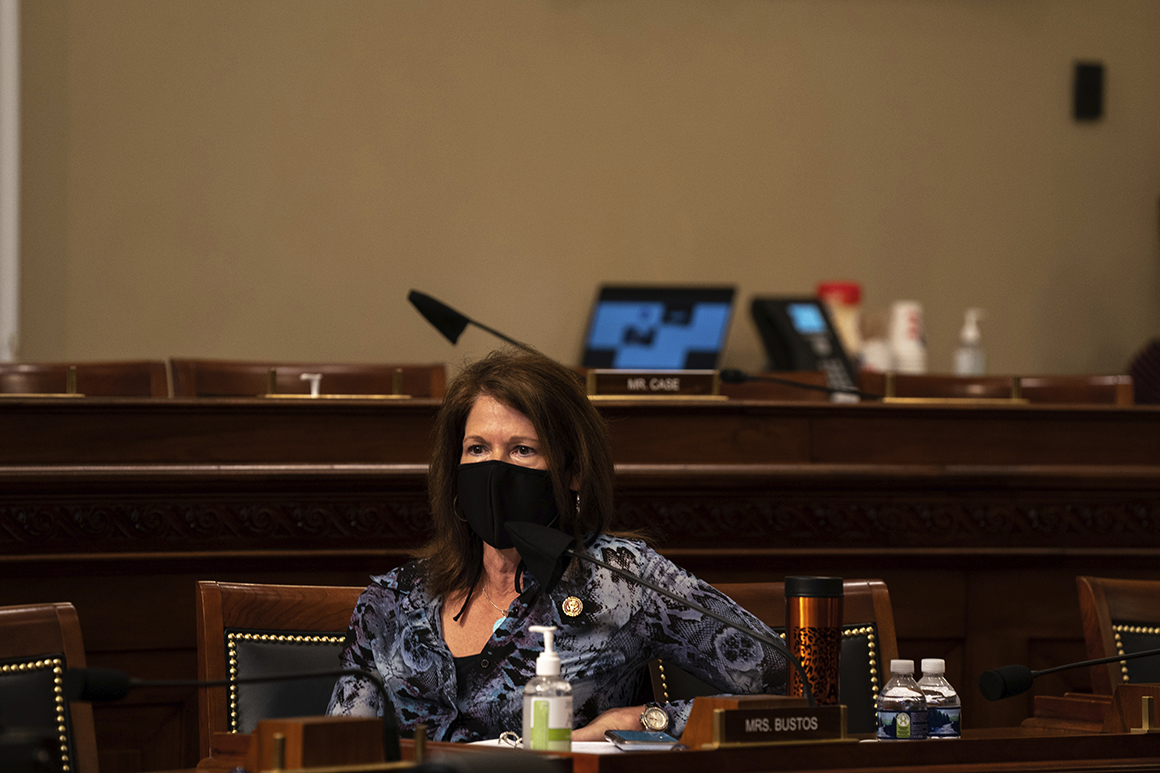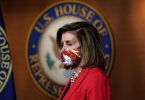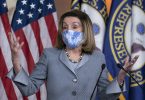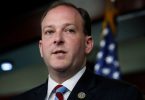House Republicans are facing another wipeout in 2020, fueled by anti-Trump sentiment in suburbs across the nation.
But it’s a different story in some pockets of rural America.
Long-tenured House Democrats from Oregon timber country to Midwest dairy land are watching their reelection races tighten even as their party presses for bigger gains in nearly every major metro area in the country. The dynamic provides a split-screen that mirrors the stark divide of 2016 and highlights the president’s persistent appeal in small-town America.
House Transportation Chair Peter DeFazio is facing his first tough campaign in years in his southwestern Oregon district. Rep. Ron Kind, who won by nearly 20 points two years ago in rural Wisconsin area, has been hit with $2 million in attack ads. Even Democratic Congressional Campaign Committee Chairwoman Cheri Bustos’ gerrymandered stretch of northwest Illinois is looking closer.
Democratic lawmakers and strategists say they are confident most of these incumbents will hold on, particularly with Joe Biden topping the ticket and the president lagging in many polls. But the closer-than-expected races show how quickly President Donald Trump has driven GOP gains in rural America, carrying a warning that Democrats still have work to do to win back some of those once-loyal voters.
"The suburbs are super sexy right now and we’re not," said J.D. Scholten, the Democratic nominee in a farm-heavy district in northwest Iowa held by outgoing GOP Rep. Steve King. "That’s the reality. So I feel that rural Democrats have to run at least twice as hard."
And some in the party concede part of the problem is their poor communication to those voters.
“We all have to do a better job in messaging the work that we do,” said Rep. Henry Cuellar, a moderate Democrat who has the backing of many farm groups in his sprawling south Texas district.
Even Rep. Collin Peterson — chair of the House Agriculture Committee, a crucial perch for one of the nation’s top farming seats — who has resisted defeat for three decades, is more vulnerable than ever in a western Minnesota district Trump won by 31 points.
Flush with cash and ahead in the polls, House Democrats this year are surging into districts where they have rarely been competitive, in the outskirts of Indianapolis, Phoenix and St. Louis, buoyed by a recent growth of well-educated, affluent voters. But the Democratic freshmen from the suburbs tend to be faring far better in their November races than their counterparts who represent rural areas.
Members like Democratic Reps. Colin Allred and Katie Porter who flipped seats in suburban Dallas and the one-time GOP bastion of Orange County are essentially safe, while Democratic Rep. Xochitl Torres Small in southern New Mexico and Anthony Brindisi in upstate New York are among the most endangered.
There are not enough rural districts to offer a path back to the majority for House Republicans. And recruitment flops in some seats have narrowed the odds further. For example, Rep. Jared Golden of Maine, who holds the second most rural district in the nation, caught a break when Republicans nominated a former state representative who failed to post any serious fundraising.
But national Republicans made a late flurry of ad buys against Kind, DeFazio and Bustos in the final weeks, a sign they also see the futility of many suburban targets but potential in rural areas.
The Congressional Leadership Fund, the leading House GOP super PAC, dropped $2 million against Kind after summer polling indicated the president was still leading in the rural southwestern Wisconsin district. (He won it by 5 points in 2016.)
“This district is one, just a few in the country, where Republicans are absolutely on the offensive,” Derrick Van Orden, the Republican running against Kind, said in an interview. “The enthusiasm for the president of the United States cannot be overstated.”
CLF also made a late play in Oregon, where DeFazio faces Republican Alek Skarlatos, who was dubbed a “hero” after he stopped a terrorist attack on a Paris-bound train in 2015. Trump only narrowly lost the district in 2016 and Skarlatos raised nearly $2.6 million last quarter, twice the haul of DeFazio.
Operatives for the group saw an opportunity to make cultural and economic arguments in these districts, by emphasizing the policy agenda from the liberal wing.
“They’ve put all of their eggs in the Trump and Obamacare basket,” said CLF President Dan Conston, referring to Democrats. “At some point that will not be nearly as effective or top of mind to voters as a Democrat majority in the House that puts through a Green New Deal and Medicare for All.”
In her campaign to lead the DCCC, Bustos heavily touted her 24-point winning margins in an Illinois district with sizable rural populations that backed Trump in 2016. Bustos projected confidence in her race in a call last week with reporters, but her margin, too, is expected to be tighter this year. Both the National Republican Congressional Committee and CLF polling found Bustos under 50 percent in a single-digit matchup.

And over the weekend, CLF began a $500,000 ad campaign against Bustos, though it will only run in two of the main media markets that cover her district.
But the GOP is still hampered by financial struggles. With suburban struggles mounting, CLF is not airing ads against DeFazio or Kind in the final two weeks. And Van Orden, low on cash, significantly reduced his ad buy this week, according to media buying data.
Some Democrats worry a suburban-centric strategy could prove problematic in the post-Trump era, when the GOP might be able to win back affluent white voters with college degrees.
They say the party has missed opportunities to point out where Trump has failed rural America, from his lack of a plan on rural infrastructure and broadband to the thousands of small and mid-sized farms suffering in his ongoing trade war with China.
And policy areas where Trump has succeeded — such as renegotiating the nation’s trade terms with Mexico and Canada — were bolstered by Democratic support. Failing to take credit for that USMCA deal, which passed with more Democratic votes than GOP votes in the House, only costs the party in these rural areas, they say.
Essential to keeping those voters, Cuellar said, is showing up and speaking the same language. But he argued Republicans have been able to make inroads, in part, because they’ve capitalized on ideological or cultural issues that tend to divide the Democratic Party — namely guns, abortion and climate change.
“What happens sometimes is the other side does a better job, they’ll spin things that aren’t right. ‘Oh the New Green Deal is going to outlaw cows.’ And that messaging gets across,” Cuellar said.
Biden’s economic message has at times fallen flat, with polling often showing voters trust Trump over the former vice president to manage the economy. Those numbers, however, have begun to slip and Democrats think they can make that argument with Biden.
Kind in Wisconsin joined Biden for a 90-minute virtual forum this summer, where he said he was impressed by the party nominee’s plans to revitalize rural counties. Meanwhile, he said, Trump started a "terrible trade war" that forced the government to dole out billions of dollars in federal subsidies to farmers.
"The farmers I’ve talked to don’t want that aid. They want trade," Kind said. "Almost half of the money they earn is coming out of Washington. And that’s not sustainable and that’s not what they want."
And Democrats say they eventually need to sell voters on a positive economic message that goes beyond simply ousting Trump and ending the pandemic, warning that they can’t just be the party of rejection.
It’s a similar problem that Democrats faced in 2018, when losses in states with substantial numbers of white, rural voters sunk them deeper into the Senate minority. The party lost Heidi Heitkamp in North Dakota, Joe Donnelly in Indiana and Claire McCaskill in Missouri in a single sweep.
After their losses, Heitkamp and Donnelly formed a new group, One Country Project, to help the party connect with rural voters, particularly on economic issues.
“You’re never going to get the ‘right to life,’ one-issue voter,” Heitkamp said in an interview. “That’s not going to happen for the Democratic Party. But people who are concerned about putting food on the table; people who are concerned about food insecurity, concerned about long-term viability of American agriculture — those are voters we can speak to because we have a better plan.”
Rep. Ami Bera (D-Calif.), a moderate Democrat who frequently campaigns for his rural colleagues, said he’s been watching the gradual shift away from his party in these areas, especially older, white Americans. Bera said he once asked Sen. Joe Manchin (D-W.Va.) about Trump’s popularity in his home state, and whether coal miners really believed he could make their jobs come back.
Manchin told him no, they didn’t really believe that, but he added, “At least he’s talking to them.”
Source: politico.com
See more here: news365.stream






